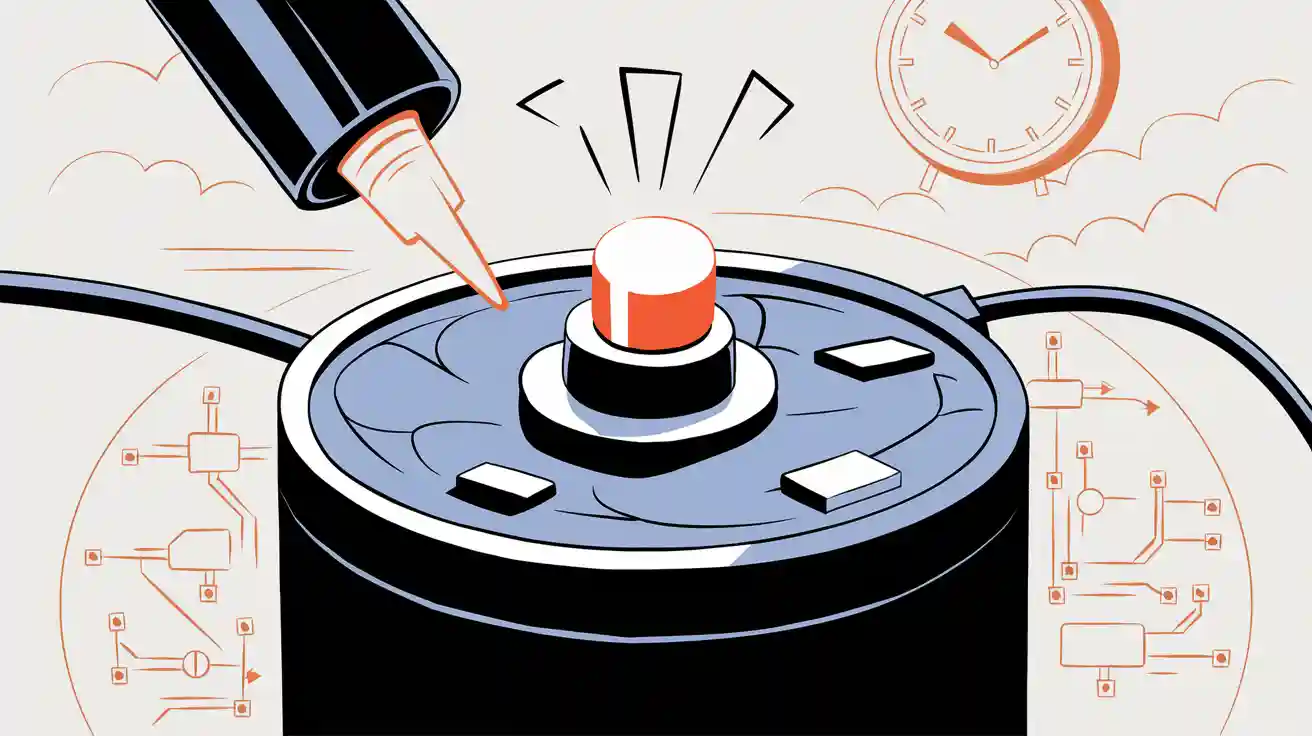
Partial charging/discharging about lithium battery usage plays a critical role in determining its longevity. Studies reveal that charging a cell to 4.10V instead of 4.20V can double the cycle life, while a reduced Depth of Discharge (DoD) can increase cycles from 300 to 6,000. For businesses, optimizing battery charging practices enhances operational efficiency and reduces replacement costs, ensuring long-term economic benefits.
Key Takeaways
Keep your lithium-ion battery charge between 20% and 80%. This helps the battery last longer and stay in good shape.
Charge and discharge the battery slowly to avoid heat and stress. This keeps the battery healthy for a longer time.
Use a battery management system (BMS) to check voltage and temperature. This makes sure the battery works safely and better.
Part 1: Understanding Lithium-Ion Battery Degradation
1.1 Causes of Lithium-Ion Battery Degradation
Lithium-ion batteries are widely used due to their high energy density and efficiency. However, they are not immune to degradation, which directly affects their performance and lifespan. Understanding the causes of lithium-ion battery degradation is essential for optimizing their use and ensuring longevity.
One significant cause of degradation is the chemical reactions occurring within the battery. Over time, these reactions lead to the formation of solid electrolyte interphase (SEI) layers on the anode. While the SEI layer initially protects the battery, its continuous growth consumes lithium ions, reducing the battery’s capacity. Additionally, electrolyte decomposition contributes to battery degradation by generating gases and causing mechanical stress on the electrodes.
Recent research from the University of Colorado-Boulder, SLAC National Accelerator Laboratory, and Stanford University has shed light on another critical factor: hydrogen. The study found that hydrogen atoms from the electrolyte can replace lithium ions in the cathode. This substitution creates mechanical stress and accelerates degradation. The discovery challenges the long-held belief that lithium ions were the primary culprits and highlights the complex interplay of chemical processes within the battery.
Thermal effects also play a role in lithium-ion battery degradation. High temperatures can accelerate chemical reactions, leading to faster capacity loss. Conversely, extremely low temperatures can cause lithium plating on the anode, which reduces battery efficiency and poses safety risks. These thermal effects underscore the importance of maintaining optimal operating conditions for lithium-ion batteries.
1.2 Effects of Partial Charging/Discharging on Lithium Battery Longevity
Partial charging and discharging significantly influence the longevity of lithium-ion batteries. Unlike full charge-discharge cycles, partial cycles reduce the stress on the battery’s electrodes, slowing down the rate of degradation. However, the impact of partial charging and discharging depends on several factors, including the depth of discharge (DoD), charging rates, and usage patterns.
Experimental data highlights the relationship between charging conditions and battery capacity degradation. For instance, batteries subjected to a 1 C current rate (100 A) exhibit varying capacity degradation patterns compared to those charged at 0.5 C (50 A) or 0.2 C (20 A). Dynamic discharge profiles, which mimic real-world usage, can enhance battery lifetime by up to 38% compared to constant current profiles. These findings emphasize the importance of realistic load profiles in evaluating battery performance and designing effective battery management systems.
Partial charging also affects the aging process of lithium-ion batteries. Laboratory studies reveal that dynamic cycling optimizes cell chemistries and reduces time-induced aging. Low-frequency current pulses, for example, have been shown to mitigate capacity fading under dynamic conditions. By adopting these practices, you can minimize battery degradation and extend its operational life.
Tip: Avoid charging your lithium-ion battery to its maximum voltage or discharging it completely. Maintaining a state of charge (SoC) between 20% and 80% can significantly reduce battery degradation and improve its longevity.
The effects of partial charging and discharging are not limited to capacity degradation. They also influence the battery’s energy density and operational efficiency. By understanding these effects and adopting best practices, you can optimize the performance of your lithium-ion batteries while minimizing the impact of degradation.
Part 2: Effects of Partial Charging and Discharging on Battery Performance
2.1 Impact on Battery Capacity and Energy Density
Partial charging and discharging directly affect the capacity and energy density of lithium-ion batteries. These factors determine how much energy a battery can store and deliver during operation. Studies analyzing real-world usage scenarios have shown that partial charging cycles, rather than complete charge/discharge cycles, can alter charge throughput. This change impacts the battery’s ability to maintain its original capacity over time. While specific numerical reductions were not quantified, the findings highlight the importance of optimizing charging practices to preserve battery lifespan.
Energy density, which measures the energy stored per unit volume, also declines with improper charging habits. When batteries operate outside their optimal state-of-charge (SoC) range, chemical reactions within the cells accelerate degradation. Maintaining SoC between 20% and 80% can help mitigate this issue, ensuring optimal battery health and maximizing longevity.
2.2 Influence on Cycle Life and Operational Efficiency
The cycle life of a lithium-ion battery refers to the number of charge/discharge cycles it can complete before its capacity drops below 80%. Partial charging and discharging can extend cycle life by reducing stress on the electrodes. For example, dynamic discharge profiles that mimic real-world conditions have been shown to improve efficiency and extend battery lifespan by up to 38%. This approach minimizes wear and tear, ensuring consistent performance over time.
Operational efficiency also benefits from partial charging. By avoiding full charges and deep discharges, you can reduce energy losses and maintain stable battery performance. Smart charging practices, such as using moderate charging rates, further enhance efficiency and prolong battery lifespan.
2.3 Safety Concerns: Voltage Imbalances and Thermal Runaway
Partial charging can introduce safety risks if not managed properly. Voltage imbalances, caused by uneven electrical current distribution in battery packs, can lead to overcurrent issues and uneven degradation rates. These imbalances increase the likelihood of localized stress and crack formation in the electrodes, compromising battery safety.
Thermal runaway, a catastrophic failure mechanism, poses another significant risk. Laboratory experiments have documented how improper SoC ranges and high temperatures can trigger this phenomenon. For instance:
Experiment Focus | Description |
|---|---|
Thermal Runaway Investigation | Studies on failure mechanisms under catastrophic conditions. |
Voltage Cut-off Parameters | Testing with specific charge/discharge cut-off voltages for safety analysis. |
Temperature Monitoring | Use of heating wires and thermocouples to track cell surface temperatures. |
To mitigate these risks, you should adopt smart charging strategies and leverage battery management systems (BMS). These tools monitor SoC, voltage, and temperature, ensuring safe and efficient operation.
Tip: Regularly inspect your battery packs for signs of imbalance or overheating. Early detection can prevent costly failures and extend battery lifespan.
Part 3: Strategies to Mitigate Lithium-Ion Battery Degradation

3.1 Maintaining Optimal State of Charge (SoC) Ranges
Maintaining an optimal State of Charge (SoC) range is one of the most effective ways to extend the longevity of lithium-ion batteries. Operating within a safe SoC range, typically between 20% and 80%, minimizes stress on the battery’s electrodes and reduces the rate of chemical reactions that lead to degradation. When you avoid extreme SoC levels, such as fully charging to 100% or discharging to 0%, you can significantly improve battery health and performance.
By maintaining a consistent SoC range, you reduce the likelihood of accelerated aging caused by extreme charge levels. Adaptive charging algorithms can further optimize SoC management by dynamically adjusting charging patterns based on real-time battery health data.
Tip: Use smart chargers or battery management systems to monitor and regulate SoC levels. These tools can help you avoid overcharging or deep discharging, ensuring your lithium-ion batteries remain in peak condition.
3.2 Using Moderate Charging and Discharging Rates
Moderate charging and discharging rates play a crucial role in preserving lithium-ion battery health. High current rates can generate excessive heat and mechanical stress, leading to faster degradation. Conversely, slower rates reduce thermal buildup and allow the battery’s internal components to operate more efficiently.
Experimental studies validate the benefits of moderate charging rates. For instance:
Study | Findings |
|---|---|
Stanford Research | Batteries tested under real-world conditions showed slower degradation and higher longevity compared to lab tests. |
GEOTAB Report | Newer EVs lose about 1.8% of health per year, improved from 2.3% in 2019, indicating better battery technology and usage patterns. |
P3 Group Report | Most batteries retained over 80% capacity after extensive use, highlighting the impact of real-world usage on battery longevity. |
Adaptive charging algorithms can further enhance battery performance by balancing charge rates based on temperature, SoC, and usage patterns. These algorithms ensure that batteries operate within safe parameters, reducing the risk of overheating and extending their operational life.
Note: Avoid fast charging unless absolutely necessary. While it may save time, frequent use of high-speed chargers can compromise battery health over the long term.
3.3 Leveraging Battery Management Systems (BMS) for Monitoring
Battery Management Systems (BMS) are essential for monitoring and optimizing lithium-ion battery health. These systems track critical parameters such as SoC, voltage, temperature, and current, providing real-time insights into battery performance. By leveraging BMS technology, you can detect potential issues early and take corrective actions to prevent degradation.
Empirical research underscores the effectiveness of BMS in maintaining battery health:
Pozzato et al. analyzed real-world electric vehicle data over a year, providing empirical evidence on battery health and performance indicators related to temperature variations.
Zhang et al. utilized a dataset from 347 EVs to explore the accuracy of battery fault detection using deep learning techniques.
Deng et al. compiled charging records from 20 EVs over 25 months, contributing to research on battery health evaluation and lifetime prediction.
Modern BMS systems also incorporate adaptive charging algorithms, which dynamically adjust charging rates and SoC ranges based on battery conditions. These algorithms optimize battery usage, reduce stress on internal components, and extend battery longevity.
Tip: Invest in a high-quality BMS for your lithium-ion batteries. These systems not only improve safety but also enhance operational efficiency, ensuring your batteries perform reliably over their lifespan.
Partial charging and discharging play a pivotal role in extending lithium battery longevity. By reducing stress on electrodes and optimizing charge cycles, you can preserve battery health and performance. Qualitative and quantitative analyses reveal consistent degradation trends, with health indicators correlating strongly with capacity loss.
Evidence Type | Description |
|---|---|
Qualitative Analysis | Trends between health characterization indicators and actual capacity were examined using graphs. |
Quantitative Analysis | Correlation coefficients (Pearson’s and Spearman’s) were used to assess the relationship between health indicators and capacity degradation. |
Observations | The health characterization index and actual capacity decreased with the number of cycles, indicating degradation. |
To mitigate these effects, adopt optimized SoC management practices and leverage battery management systems (BMS). These strategies enhance battery safety, reduce waste, and lower operational costs. Economic analyses show that accurate SoC estimation improves driving patterns and regenerative braking efficiency, while environmental studies highlight reduced waste and carbon footprint.
FAQ
1. What is the best way to extend the life of electric car batteries?
Maintain a state of charge between 20% and 80%. Avoid extreme temperatures and fast charging. Use battery management systems to monitor electric car battery packs effectively.
2. How does partial charging impact battery performance?
Partial charging reduces stress on electrodes, slows degradation, and extends cycle life. It also improves operational efficiency and minimizes risks like voltage imbalances in electric car batteries.
3. Are battery management systems necessary for battery packs?
Yes, they monitor state of charge, voltage, and temperature. They optimize battery health, prevent overheating, and ensure safe operation for electric car batteries.
Tip: For professional guidance on battery management systems, visit Large Power.






